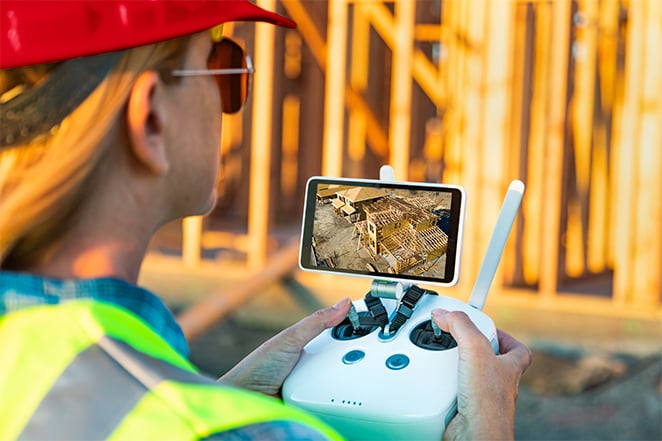 One of the most exciting new tools in the construction industry can be found not on the work site but floating in the skies above it. More and more companies are deploying construction drones, or Unmanned Aerial Vehicles (UAVs) to help increase safety, boost efficiency, and cut costs at every stage of a project’s life cycle.
One of the most exciting new tools in the construction industry can be found not on the work site but floating in the skies above it. More and more companies are deploying construction drones, or Unmanned Aerial Vehicles (UAVs) to help increase safety, boost efficiency, and cut costs at every stage of a project’s life cycle.
What was once a tool used strictly for military purposes has now come into regular recreational and commercial use, particularly in the world of construction. Indeed, a 2018 study identified the construction industry as the fastest growing adopter of commercial drone technology. Drawing on a database of more than 30,000 users, the study revealed that drone usage on construction sites spiked by a staggering 239% over the course of a single year. Talk about a startling, but promising statistic!
In this article, we’ll explore some practical uses of drones in construction processes for before, during, and after a project is completed. Then, we’ll discuss some of the laws surrounding the use of drones, offer a few resources, and pose a few questions to kickstart your thinking about what role, if any, a drone might play on your construction site.
Uses of Drones in Construction
There are multiple ways drones can be deployed to improve construction processes, from pre-construction to design, onsite, and post-construction phases. We’ll discuss each of these phases below in more detail, as well as the many drone use cases within these construction phases.
Before Construction: Mapping and Design
A tremendous amount of planning goes into a construction project before it’s shovel ready. One of the first and most important steps is to get the lay of the land. Using a drone to map out and design a project saves time and money while increasing efficiency across the board.
How Drones Are Used in Construction Plans to Map and Survey Construction Sites
Using their onboard video cameras and a payload of other devices, drones can aerially map the entire length and breadth of a construction site along with the surrounding terrain in minutes—a typically time and labor-intensive process that can take a human surveyor hours, if not days to complete on foot. One of the tools surveyors traditionally rely on when determining the contours of a future construction site is two dimensional topographical maps. But these maps may be out of date or inaccurate due to erosion from rainfall or other gradual changes in the terrain, which could lead to costly errors and change orders down the line.
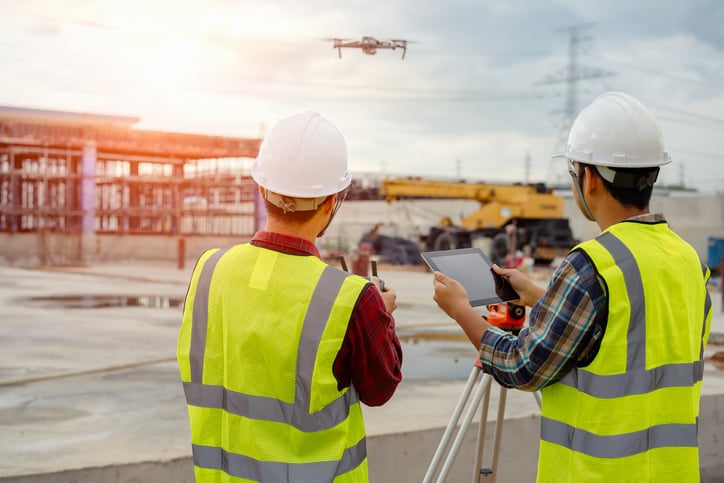
One advantage to using them is that drones eliminate this uncertainty by creating their own up-to-date topographical images of a construction site that are based on the actual conditions on the ground. They can accomplish this feat better than conventional methods by capturing many aerial images of a site from multiple angles with downward facing sensors, laser scans, and onboard multispectral cameras. These images can then be stitched together using photogrammetry software to create what’s called an orthomosaic map—basically a high-resolution, bird’s-eye, 3D model of the site. Drone generated orthomosaic maps are extremely precise (accurate within 1 centimeter) representations of topographical geometry, and can be created in a fraction of the time it takes for traditional methods to produce what are, at best, approximations of a future construction site.
How Drones Impact Project Design
Once the site is mapped out, a drone’s highly efficient imaging technology can then be used to enliven designs of the building project itself. Architects and BIM specialists often use Building Information Modeling (BIM) software to design immersive multi-layered visualizations of built environments. Drones are key to providing the foundational data and orthomosaic imagery upon which those BIM models are initially based. Once this data is captured by the drone and plugged into a BIM platform, it becomes indispensable to how the project unfolds from that point onward, providing insights into how a structure will impact the surrounding environment and vice versa. What’s more, construction companies can use LiDAR to offer an even sturdier virtual foundation upon which a BIM model can be built upon, offering clients and stakeholders a glimpse into what the finished project will look like in its natural environment.
3 Drone Use Cases During Construction: Safety, Tracking, and Real-Time Progress Reports
Though incredibly useful during the planning phase, it’s when a project is underway that construction drones shine brightest, providing many advantages worth adopting such as novel new ways to ensure safety, keep track of expensive assets, and provide updates on how a job is unfolding in real-time.
How Drones Improve Construction Safety
Inspections are critical to ensuring that working conditions are safe for laborers and that a structure is being assembled correctly. Difficult or dangerous to reach places that once required inspection by humans can now be scouted out remotely via drone. Whether it’s a precarious height, a crushing depth, or an area of high heat or chemical exposure, a drone can reach it more easily and safely than a human can. Inspecting elements of a multi-story structure in progress for example may require the use of ladders, scaffolding, or even climbing equipment if done in person. These risks can be circumvented entirely with a drone, which can simply float up close and hover to safely inspect the targeted element with a wide array of imaging capabilities, including thermal cameras which can be used to detect troublesome heat signatures and other construction shortfalls that are invisible to the naked eye. Once nearly impossible to reach tunnels and passages are now accessible to newer drone models like the Elios 2, which is specially designed to be able to safely navigate and inspect confined interiors. There are also a growing number of underwater drones available to inspect submerged bridges abutments and other types of water-based structures.
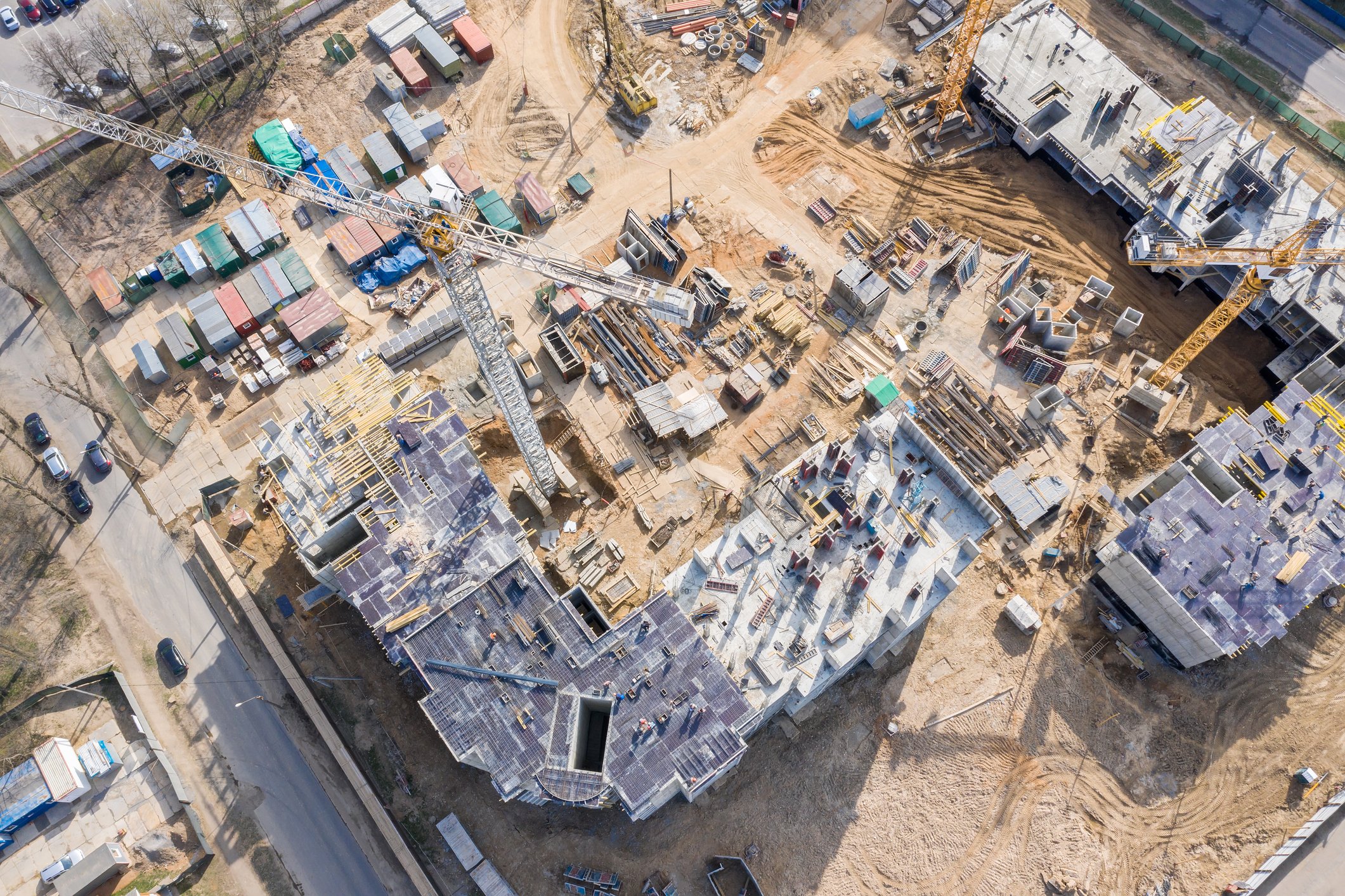
Besides inspections, drones can improve safety for personnel in a number of other ways. Drones can monitor construction sites while work is in progress, keeping an eye out for unsafe work conditions and catching hazards before they pose a direct threat to life. Construction sites are highly dynamic and kinetic environments with lots of moving parts. Power tools, heavy machinery, building materials, overlapping work crews—any one of these elements can be seriously dangerous if not minded properly. The bird’s-eye view afforded by drones makes it easier than ever to do just that, enabling project managers to efficiently ensure that conditions remain stable and safe on the ground.
Drones can also perform certain hazardous tasks that a human being previously would have to do, like taking measurements at extreme heights. More than 36% of fatalities in the workplace occur due to falls. This risk to the worker can be completely eliminated from the equation by using a drone instead, whether for a multi-story megaproject or a roofing contractor scoping out work. A variety of software applications are on the market that allow drones to take precise measurements without putting anyone in harm’s way.
How Drones Help Keep Track of Assets
The loss or theft of tools and equipment is a problem that’s estimated to cost the construction industry millions of dollars every year. The scale and complexity of most jobsites makes it easy for items to go missing. With a drone, however, project managers are able to keep tabs on the whereabouts of their most valuable assets. Drones can do regular sweeps of a construction site from above to establish visual contact with lost items or simply keep track of tools and equipment as they move from one spot to the next.
Drones are also capable of supporting a variety of digital tracking solutions that can identify the locations of items even when visual contact isn’t possible. A properly equipped drone can quickly scan large areas for items fitted with Radio Frequency Identification (RFID) tags, or even use Bluetooth Low Energy (BLE) technology to pinpoint tools and equipment positioned on the earth below. Our very own ONE-KEY™ digital inventory management platform already uses BLE to monitor the locations of compatible items through built-in Bluetooth® tracking functionality. But as an enterprise inventory solution, One-Key can be used in conjunction with barcoding, equipment tagging procedures and trackers, like the TICK™ tracker, to drive the same value across your inventory, no matter the manufacturer. Combining an aerial drone with One-Key would greatly streamline your ability to keep track of the most valuable assets in your inventory, preventing the need to expend time and money replacing them in the event of theft or misplacement.
How Drones Provide Real-Time Progress Reports
Clients want to be able to rest easy knowing that work is progressing smoothly, on schedule, and within budget. Traditionally, this kind of reassurance is provided either with in-person visits or in-depth reports complete with infographics and photographs. Drones can supplement or entirely replace these more cumbersome methods by providing impressive aerial vistas and virtual walk-throughs of construction in progress; features made all the more vital in the midst of an ongoing pandemic. Instead of having to travel on-site or slog through a lengthy presentation, clients can remotely view a project “first hand” via a live stream or pre-recorded video captured by a drone’s hi-res cameras. This saves both the client and the project team an enormous amount of time and resources that can then be redirected into other areas.
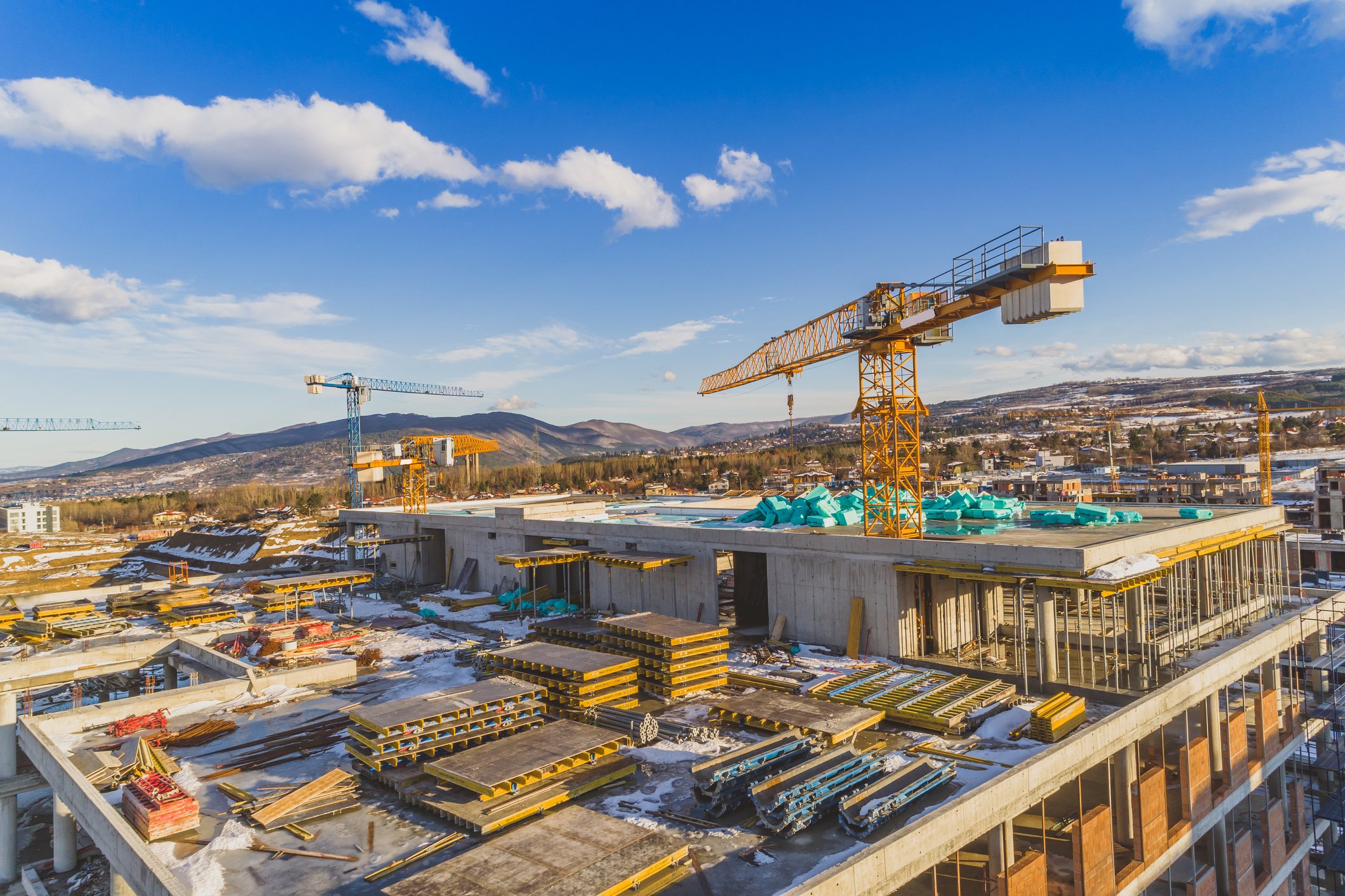
By the same token, drones can capture images and data that can then be regularly plugged into BIM software and run alongside the virtual version of a project, revealing possible discrepancies between design and reality as construction unfolds.
After Construction Drone Use Case: Marketing Materials
Drones continue to be useful even after construction on a project wraps up, primarily by providing a new way to tell a company’s story.
How Drones Can Be Used to Create Construction Company Marketing Materials
Marketing is key to boosting a construction company’s profile. To maintain current business relationships and generate new leads, construction companies need to be as adept at selling themselves as they are at building things. Images and footage captured by a drone throughout a project’s lifecycle can be used to create eye-catching website content and promotional material that showcases the quality of a company’s work. Videos from a drone can be transformed into stunning time-lapse reels or edited together with sound to generate high quality cinematic experiences. The goal in marketing is to tell a story, and drones are proving to be powerful tools that, in the right hands, can be used to remarkable effect.
The Future of Drones in Construction & Getting Started: The Law, Some Resources, and Other Considerations
There are a few things to think about before letting your construction drones take flight. If you’re considering buying a drone for your construction company, a good starting point is to ask yourself what exactly you want to use it for. Are you looking to speedup site mapping? Boost safety? Elevate your storytelling capability? As we’ve shown, drones can help accomplish all of these things and more. But they aren’t cheap, so it’s important to have a solid understanding of what you’re looking to accomplish with a drone before investing in one.
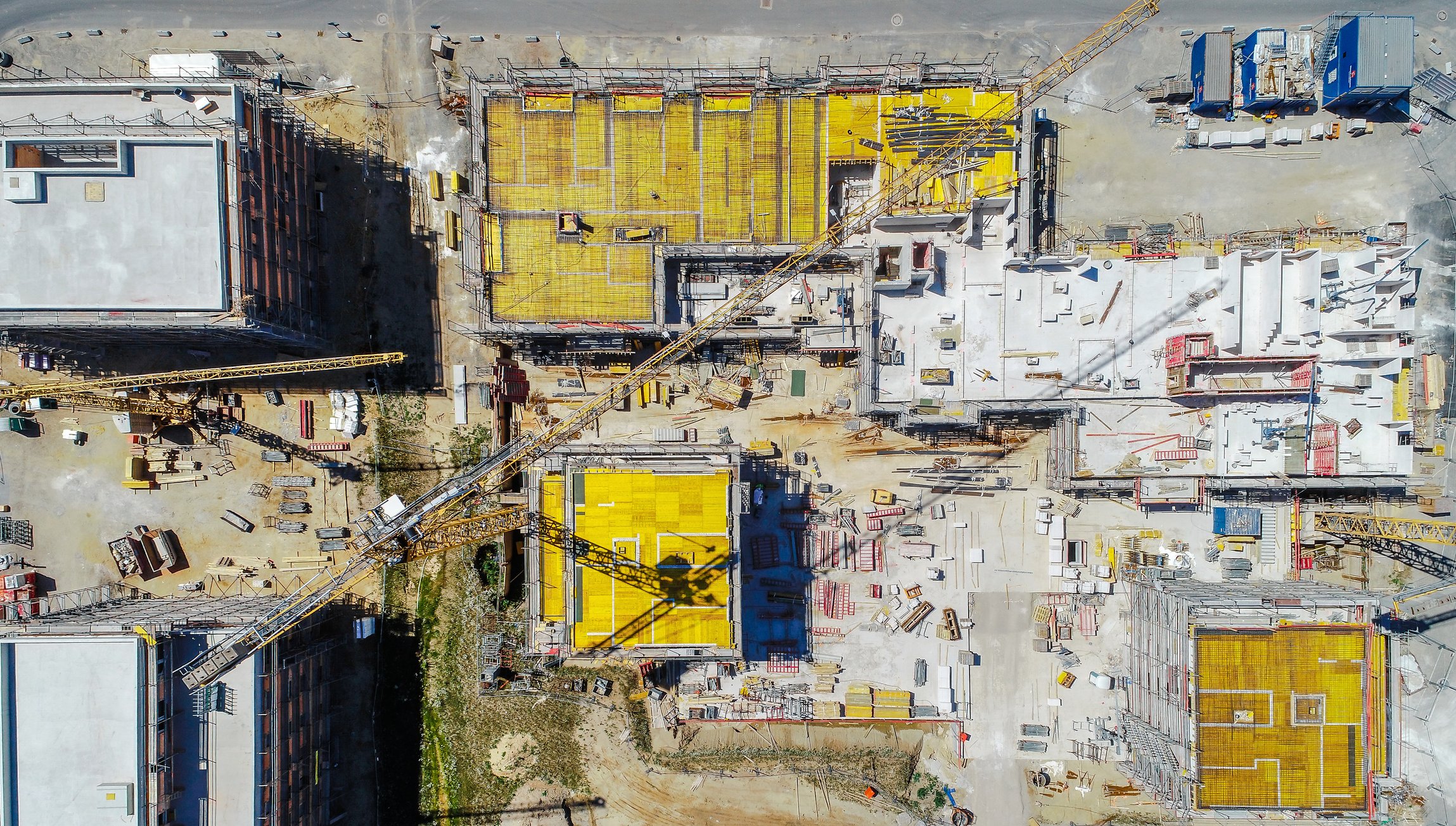
If a drone is indeed in the cards, the next thing to consider is which type to get. Fixed wing drones can stay up in the air longer and are great for mapping out large swaths of terrain, while rotary drones can hover in place with a high level of stability, making them ideal for navigating tighter quarters. Or maybe your project calls for an underwater drone. Whatever the case may be, there are a lot of options to choose from, so take your time comparing specs, features, and pricetags.
Another important thing to think about before you hit that “purchase” button is what kinds of hoops you’ll need to jump through and what sets of rules you’ll need to adhere to when entering the world of drones. The Federal Aviation Administration permitted the use of commercial drones in 2016, albeit with some caveats under 14 CFR Part 107. Drones are still a relatively new technology and the regulations that govern them are constantly evolving, so it’s the responsibility of anyone who uses drones to stay up to date on the law.
Here’s a few key takeaways that construction professionals should keep in mind:
- Drones must be registered with the FAA. You can register a drone by clicking here.
- Drones may only be operated by someone who’s certified through the FAA as a Remote Pilot In Command (RPIC). You can learn more about getting your drone pilot certification at the FAA’s website.
- Drones may not be operated from a moving vehicle.
- Drones may not fly directly over people who are unprotected by a covering structure or vehicle.
- Drones may only fly during the day, with some exception.
One final thing to think about: is it worth the hassle? As you can see, deploying a drone over your construction site isn’t as simple as buying one off the shelf at the nearest Wal-Mart and tossing it into the sky. Drones aren’t toys. They’re tools that need to be handled with seriousness and care. What’s more, they require a significant investment of money and resources up front. Someone on your team needs to be able and willing to learn the FAA regulations that govern their use, then take the time to go through the training and pilot certification process—and that’s all before they even get the controller in their hands to learn how to fly the things. If improperly handled, drones can end up posing a serious hazard to the safety of your team. Rules can change fast where airspace is concerned, and not everyone is as excited about having robots flitting over their head as you might be. Technology changes fast, and while the possibilities are thrilling, it’s important to ask hard questions about how the latest gadgetry might be used or misused, especially in the already hazardous world of construction.
That said, drones are versatile tools that can dramatically boost safety, increase efficiency, and cut costs when in the right hands. With drones trending upward across the industry, it’s important for construction professionals to familiarize themselves with what this new technology is capable of and make informed decisions about whether or not they want them in the skies over their jobsites.
TL;DR
In summary, the uses of construction drones in the industry are on the rise. There are many benefits and use cases:
- Pre-construction phase: planning with mapping and design.
- Construction/onsite phase: Construction drones can be used for 3 applications: to improve project safety, completion tracking, and to provide real-time progress reports.
- Post-construction phase: post-project, using construction drones in your company’s marketing materials can open doors to more leads and business with customers looking to work with high-tech construction companies utilizing the most advance construction technologies to improve the completion of project and safety.